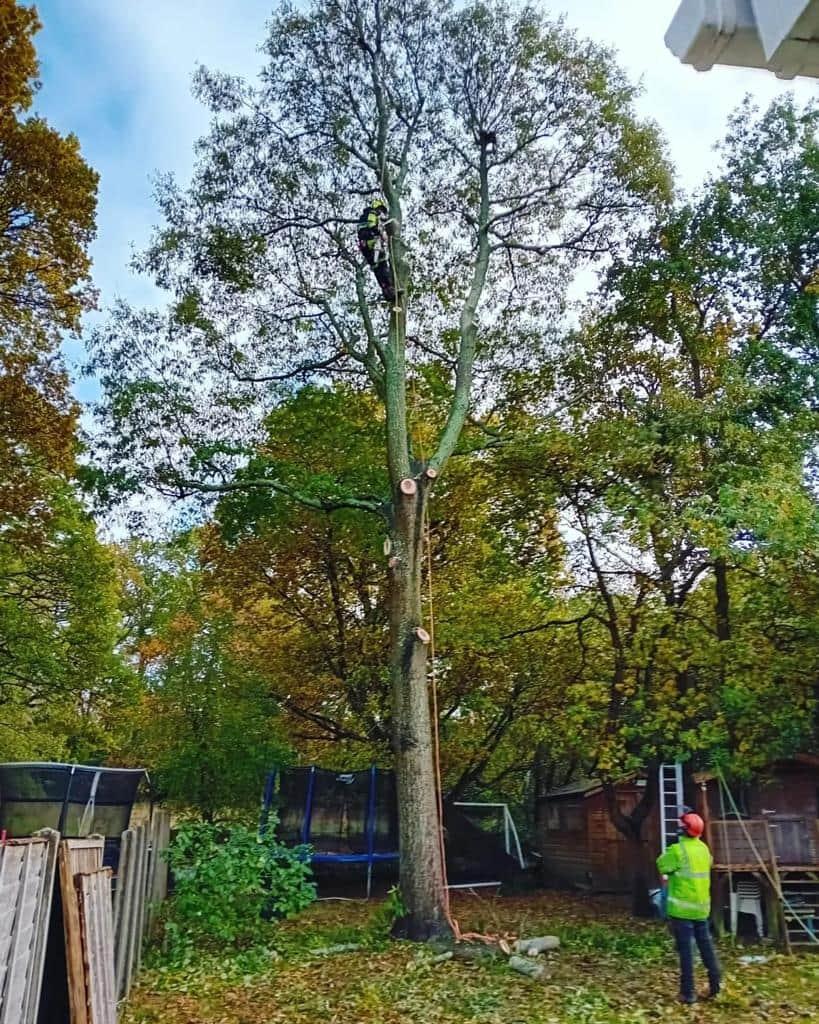Introduction: Stump reduction is vital to tree maintenance and land management, particularly when dealing with large or stubborn tree stumps. While stump grinding is a common method for complete stump removal, stump reduction techniques offer an alternative approach for minimising stump size and facilitating easier removal. In this blog post, we’ll explore different techniques for stump reduction, providing valuable insights for property owners seeking efficient solutions for managing tree stumps.
Chemical Stump Removal:
- Chemical stump removal involves using specialised products or killers to accelerate the decomposition process and facilitate stump reduction. These products contain active ingredients that break down the lignin and cellulose in the stump, gradually softening the wood and making it easier to remove. While chemical stump removal effectively reduces stump size over time, it requires patience and may take several weeks or months to achieve the desired results.
Manual Stump Cutting:
- Manual stump cutting is a labour-intensive technique involving using chainsaws, handsaws, or axes to cut and reduce the stump’s size physically. This method suits smaller stumps or situations where mechanical equipment cannot be easily accessed. Property owners can gradually chip away at the stump, cutting it into smaller sections and removing excess wood to reduce its overall size. While manual stump cutting can be effective, it requires physical exertion and may pose safety risks if proper precautions are not followed.
Mechanical Stump Grinding:
- Mechanical stump grinding remains the most efficient and popular method for stump reduction, especially for larger or more challenging stumps. Stump grinders are powerful machines equipped with rotating cutting discs or teeth that grind away the stump’s wood, reducing it to mulch or sawdust. Property owners can choose from various stump grinder sizes and configurations to match their stumps’ specific dimensions and characteristics. Mechanical stump grinding offers rapid and thorough stump reduction, making handling and removing the remaining stump debris easier.
Fire Pit Stump Burning:
- Fire pit stump burning is an age-old technique for stump reduction that involves burning the stump to reduce its size and volume gradually. Property owners can create a fire pit around the stump, ignite a controlled fire, and allow it to burn slowly over time, consuming the stump wood and reducing it to ash. While burning a fire pit stump can effectively reduce stumps, careful supervision and compliance with local fire regulations are required to ensure safety and prevent wildfires.
Hybrid Stump Removal Methods:
- Some property owners may opt for hybrid stump removal methods that combine multiple techniques for optimal results. For example, combining chemical stump removal to soften the stump, followed by mechanical stump grinding to expedite the reduction process, may offer a comprehensive approach to stump management. By leveraging the strengths of different techniques, property owners can achieve efficient and tailored solutions for stump reduction based on their specific needs and preferences.
Conclusion: Stump reduction is crucial in tree stump management, allowing property owners to minimise stump size and facilitate easier removal. Whether employing chemical stump removal, manual cutting, mechanical grinding, fire pit burning, or hybrid methods, property owners have various techniques to reduce stumps on their properties effectively.
Call us on: 023 8235 6096
Click here to find out more about LM Tree Surgery Cowplain
Click here to complete our contact form and see how we can help with your tree’s needs.

